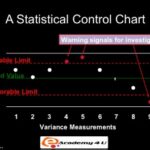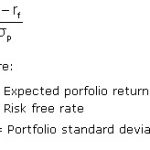To help you find the best free accounting software for your needs, we’ve compiled a list of our top picks. Forbes Advisor selected these solutions based on pricing, features, support, reputation and more. A financial dashboard template is a great way to kick off your financial dashboard’s design process. Let’s take a look at some of the best financial dashboard examples on different visualization tools to help you get started. Test the dashboard with a few users from your target audience and take their feedback into consideration when making adjustments. Up to this point, we’ve been pretty direct with the role data dashboards could – likely should – play in your financial reporting.
Income Statement
They enable users to drill down into specific details, perform in-depth analysis, and identify patterns or anomalies that may impact financial performance. It also allows users to analyze the data across multiple dimensions, such as by product category, region, or time period. Users can use interactive visualizations to explore trends and identify areas of improvement. First, it’s important to note that not all accounting dashboards, or accounting reports, are created equal.
Preview and transform data
The Financial Reporting dashboard provides a detailed view of the company’s financial performance over time. It includes an overview of the company’s key financial statements, such as its income statement, balance sheet, and cash flow statement. This dashboard allows finance teams to analyze their performance and make necessary adjustments accordingly to improve profitability. Neat just has one pricing plan making it easy for business owners who have a hard time deciding on which plan to choose. For $200 per year, users can have access to features like unlimited real-time reports such as profit and loss (P&L) statements, cash flow statements, balance sheets and transaction reports.
Akaunting: Best for Businesses Looking for a Truly One-Stop Free Accounting Software
- When building a financial reporting dashboard, it is important to only include metrics that are relevant to your business.
- It also covers certain invoicing and quote-related bases — plus the ability to accept payment via credit card or PayPal.
- The way they deliver it is just as critical, with data visualization lending a convenience and immediacy you can’t replicate by other means.
- So everything, from data connection to distribution of your dashboards at any time and on any device, is all business-user friendly.
- For example, a possible option would be to focus on acquiring more big clients, as well as developing a strategy to significantly grow the number of smaller customers.
A financial dashboard can be much more than a simple visualization of your financial data. Depending on the purpose, it can be a reporting tool, a KPI monitoring cockpit, a data analysis instrument – or even all at once. But to be all that, a dashboard needs to be meaningful and well-suited for the challenges at hand.
Power BI Visualization Technique: Learn How To Create Background Design Plates
For more details on this, you can refer to our article on preparing a cashflow forecast in Google Sheets. There’s also a granular overview of profits and losses by client and by project, profit margin by client predetermined overhead rate and by project, billing breakdown, and profit timelines. AI analytics refers to the use of machine learning to automate processes, analyze data, derive insights, and make predictions or recommendations.
You can even track critical metrics like the Quick Ratio and the Debt Equity Ratio. The Expense Detail Analysis dashboard provides a detailed view of the company’s expenses. It includes an overview of each expense, categorized by department, and an overview of total monthly expenses. This dashboard allows finance teams to quickly monitor gross profit impacts and identify areas for cost savings and make necessary adjustments accordingly. The key to building an effective financial dashboard is gathering data from various sources, organizing it into meaningful visualizations, and monitoring KPIs in real-time. With the right tools and resources, finance teams can quickly create powerful financial dashboards to make better decisions and drive the success of their company.
Databox integrates with 75+ of the most popular software tools that companies use to track performance. Moreover, it aids in understanding how HR investments contribute to the organization’s overall financial performance. These sample financial dashboards in Power BI showcase the power of data visualization and analysis. Tracking payables by period can provide a clearer understanding of the volume of work your business does. It can also create a yardstick to make it easier to track other accounting metrics. Viewing payables by year can help your team identify cost trends and give a clearer picture of business growth over time.
Building and deploying differentiated analytics dashboards is easier than ever before. Try out all the features of Bold BI with 15-day free trial and get to know how it suit to your needs of embedded analytics. Your dashboard can be made public or shared with other members what is the current ratio formula and definition of your organization. Make sure you include important stakeholders who may utilize the dashboard to make decisions when sharing and do so with purpose. In general, you can use this data to segment your customers into different groups and tailor your offer for each of them.
Zoho Books is a robustly featured accounting solution tailored to help small businesses. Its free plan is restricted to organizations generating less than $50,000 in annual revenue, but if you qualify, Zoho Books can cover a lot of your bases. Lendio is one of the more prominent bookkeeping applications available for small businesses.
Using this dashboard, analysts can enter units sold, fixed cost, price per unit and variable cost per unit to produce a chart that maps the relationship between total profit and total sales. Currency trading managers need a financial dashboard that provides trading volume, margin, revenue, and currency data. Plus, they need all key measures to be drillable by client segment, product group, counterparty and currency.
Spreadsheets, databases, internet services, and other data repositories can all be examples of this. You now know how to automate financial reporting dashboards with the help of a user-friendly solution, Coupler.io. This dashboard allows ecommerce businesses to visualize their Shopify sales funnel and identify the factors impacting customer acquisition. Much like the Shopify dashboard we mentioned earlier, this is a sales-focused report. Connect to your warehouse, semantic layer, and hundreds of service APIs to put data analysis and dashboards into the hands of business users. Break-even analysis helps a company make investment decisions and set prices.
Here is a financial dashboard example of a financial reporting dashboard. You can use the top two views to see an overview of your company’s performance for the past three years, including important financial measures like net sales, net profit, and net profit margin. The bottom section has cross-tabs that give a more detailed breakdown of your P&L statement, following the same quarterly and yearly format as the views above. You can use the filter panel in the top left corner to view your numbers based on different criteria like region, channel, customer segment, or product category.
It excludes any income from investments or other non-operational sources. Analyzing this metric can reveal the impact of cost fluctuations and pricing strategies on profitability letting you maintain competitive advantage and profitability. You can also use this metric to compare performance across different periods, products, or services. It helps you analyze seasonal patterns and market demand so you can find growth opportunities.
Knowing how much you’re earning and spending can help you make informed decisions and plan for the future. One helpful tool that lets you stay on top of your enterprise’s financial performance is a financial dashboard. With your data model in place, you can have Power BI users create visualizations that tell a compelling story about your financial data.
And since all of the data comes directly from your repositories, it will automatically update with the latest information. Revisiting our car dashboard analogy, that would be akin to driving without a fuel gauge, speedometer, or temperature gauge. From a practical, real-world perspective, data dashboards are certainly future value of annuity formula with calculator a new and better way to analyze your business information. However, if you’re to put your change management hat on for a moment, you know that people don’t always take kindly to something new, no matter how much better it might be. By using dashboards, you’re able to combine data from multiple sources into one.




